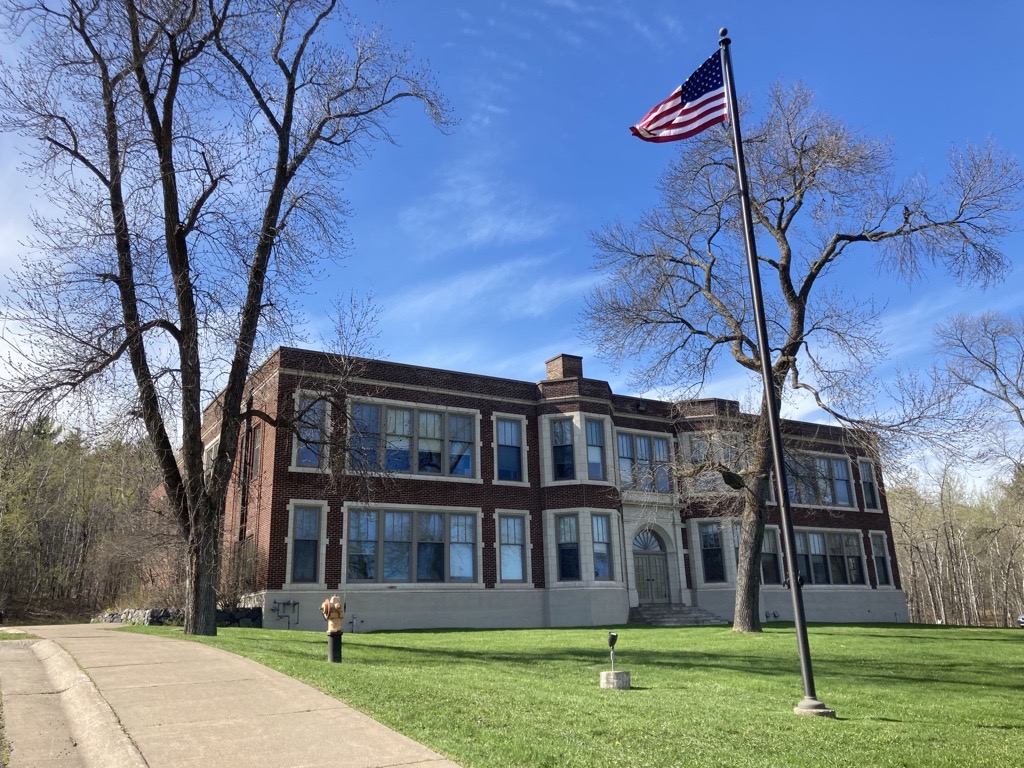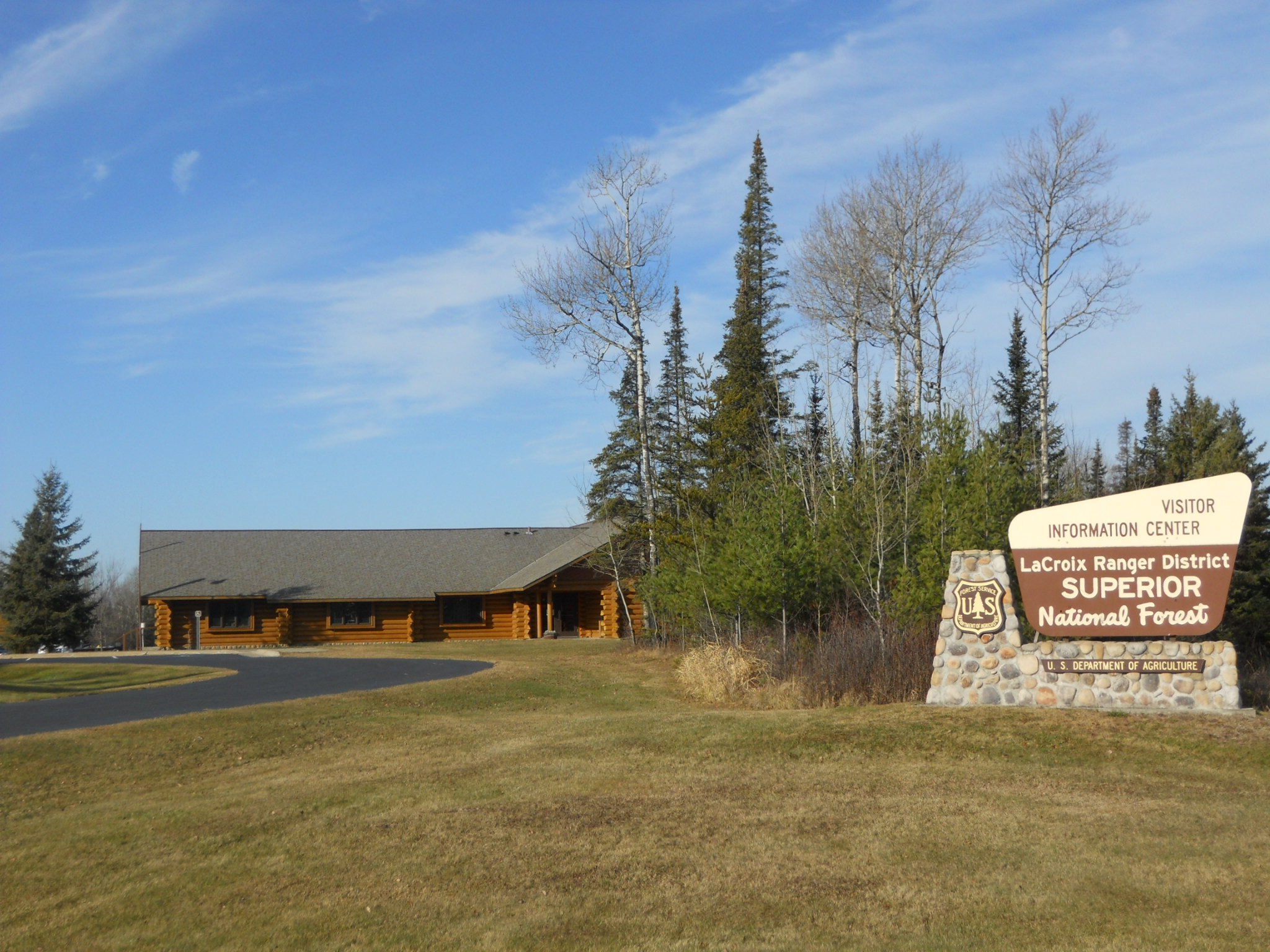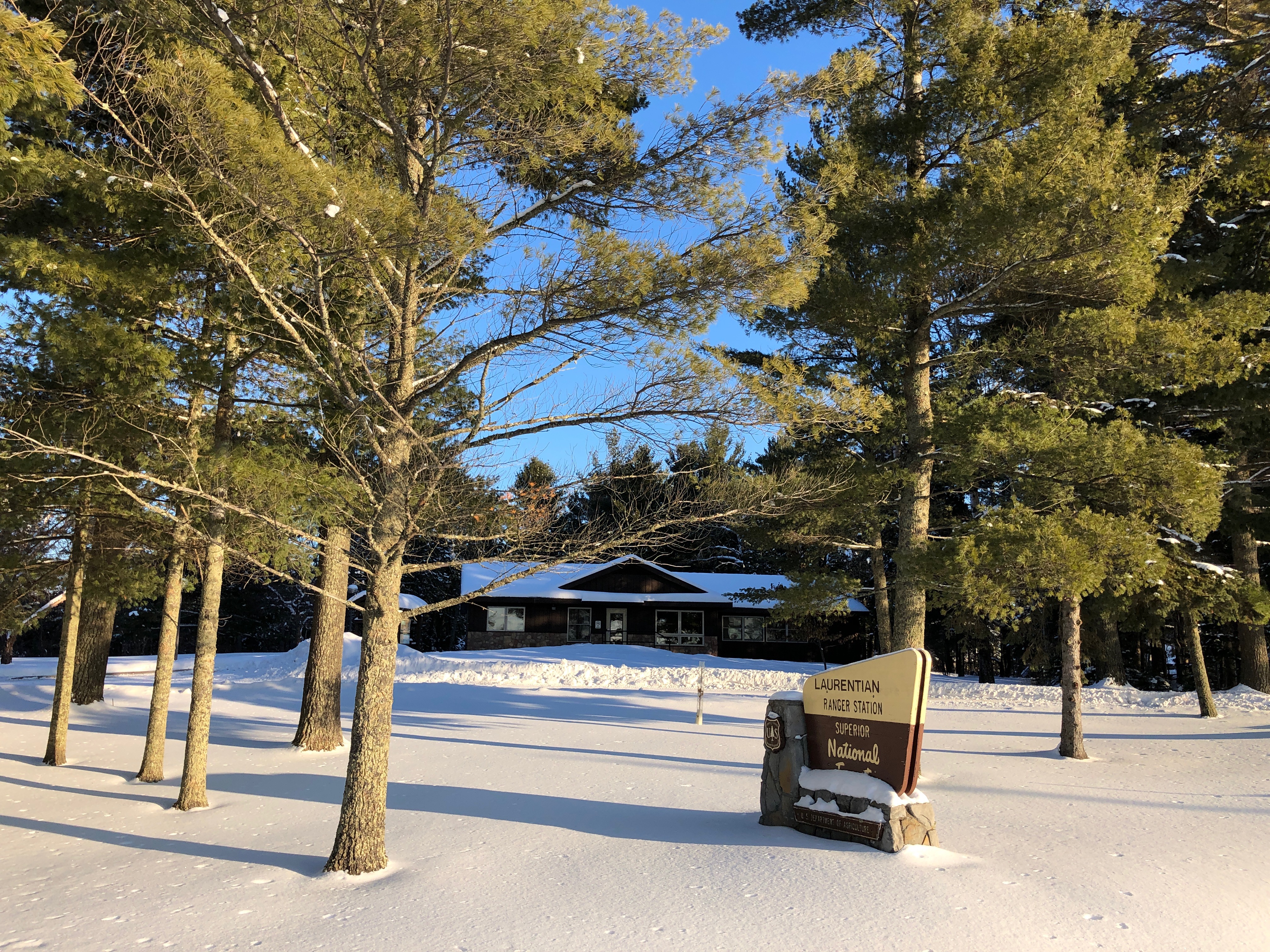About the Area

Over 445,000 acres or 695 square miles of the forest is surface water. In addition, more than 1,300 miles of cold water streams and 950 miles of warm water streams flow within the boundaries of the Superior. Fish species such as walleye, northern pike, smallmouth bass, lake trout, brook trout, rainbow trout, and brown trout can be found in abundance in these waters. The northern forest community thrives with its pine, fir and spruce trees and is home to numerous wildlife species including deer, moose, gray wolf, and black bear.
Natural Resources
Three million acres of land, water, rock, and trees cover the Superior National Forest. This landscape is home to a variety of plant, fish and wildlife species.
Niche Statement
The Superior National Forest is known locally, regionally, nationally, and internationally for providing a variety of quality recreation opportunities. The Superior is the eighth most visited national forest in the nation.
Valued for its boreal forest ecosystem, the Superior is home to clean lakes, rivers, streams, and bogs; abundant winter snow and alluring summer temperatures; as well as a rich cultural history. The Superior is renowned for its vast remote settings, as well as the million-acre Boundary Waters Canoe Area Wilderness.
These distinctive qualities provide the setting for a full range of motorized and nonmotorized recreation opportunities, and the Forest focuses on delivering sustainable recreation activities and opportunities appropriate to these remote, natural settings.
-
Superior Remoteness

Opportunities for Semi-Primitive and Primitive camping in remote, scenic landscapes. • Isolated motorized and nonmotorized recreation opportunities outside the Boundary Waters Canoe Area Wilderness. • Unique winter opportunities for snowmobiling, cross-country skiing, and dog sledding in remote settings. • Opportunities for hiking and riding mountain bikes, horses, or ATV’s in a remote setting. • Canoeing, camping, and hiking opportunities in the Boundary Waters Canoe Area Wilderness, the largest Forest Service Wilderness east of the Rocky Mountains.
-
Superior Boreal Forest Ecosystem

Opportunities for bird watching, and viewing a variety of wildlife and plant life, including moose and the endangered gray wolf. • Remote settings for berry picking, wild ricing, viewing fall colors, fishing, and hunting. • Opportunities for scenic viewing of varied vegetation and topography along roads, trails, waterways and scenic byways.
-
Superior Lakes and Rivers

Travel along a unique system of waterways (including travel along an interconnected system of lakes, rivers, streams and portages). • More than 2000 lakes and streams provide canoeing, boating and fishing opportunities. • Sites adjacent to water offer developed and dispersed camping opportunities.
Organizational Overview
The Forest is made up of the following staff areas:
Forest leadership consists of the Forest Supervisor, Deputy Forest Supervisor, Executive Assistant, five District Rangers and four team leaders (Administration, Natural Resources, Public Service, Fire & Aviation Management).
The Headquarters office for the Superior National Forest are located in Duluth, Minnesota. Headquarters staff include the Forest Supervisor who has overall responsibility for management on the Forest with assistance from the Deputy Forest Supervisor.
The Lead Forest Law Enforcement Officer at Headquarters oversees a staff of Law Enforcement Officers located at Ranger District offices across the Forest.
Includes wildlife and fisheries management, aquatics, air quality, soils, planning, monitoring, environmental analysis (NEPA), geographic information systems (GIS), timber management, silviculture, and special forest products. Each of the program managers provide support and coordinate with specialists on the five Ranger Districts.
Includes recreation, wilderness, heritage, lands, surveying, public affairs, and interpretation. Each of the program managers provide support and coordinate with specialists on the five Ranger Districts.
Specialists on the Team provide support for purchasing, contract administration, financial accounting, records, human resource liaison, engineering, and civil rights at Forest Headquarters and on the five Ranger Districts.
Geographically, the area within the Superior National Forest is divided into five administrative units called Ranger Districts to provide local overview and management. These include the Kawishiwi Ranger District in Ely, the Laurentian Ranger District in Aurora, the LaCroix Ranger District in Cook, the Gunflint Ranger District in Grand Marais, and the Tofte Ranger District in Tofte. Each unit is managed by a District Ranger and an interdisciplinary staff who implement projects at the local level.
The Forest Fire Management Officer at the Minnesota Interagency Fire Center in Grand Rapids coordinates fire management activities with partner agencies and other members of the interagency Minnesota Incident Command System to address wildfires and other incidents in the State.
Superior National Forest Communities
-
Forest Headquarters - Duluth, Minn

Duluth is a major regional trade center, boasting one of the highest per capita annual retail sales figures of any city in the state.
-
Gunflint Ranger District - Grand Marais, Minn

Grand Marais is a small picturesque town on the shore of Lake Superior, on the eastern edge of the Superior National Forest.
-
Kawishiwi Ranger District - Ely, Minn

Ely is located in the heart of the Boundary Waters Canoe Area Wilderness (BWCAW) and the arrowhead region of Minnesota and has a population of around 3,500 year round residents.
-
LaCroix Ranger District - Cook, Minn

Cook is a full service community with a wide range of recreational opportunities.
-
Laurentian Ranger Disrict - Aurora, Minn

Aurora is locates 60 miles north of Duluth, Minnesota. Outdoor recreational opportunities include deer and small-game hunting, snowmobiling, downhill and cross-country skiing, biking and hiking.
-
Tofte Ranger District - Tofte, Minn

Tofte is a small and picturesque town on the shore of Lake Superior with a population of about 200.

